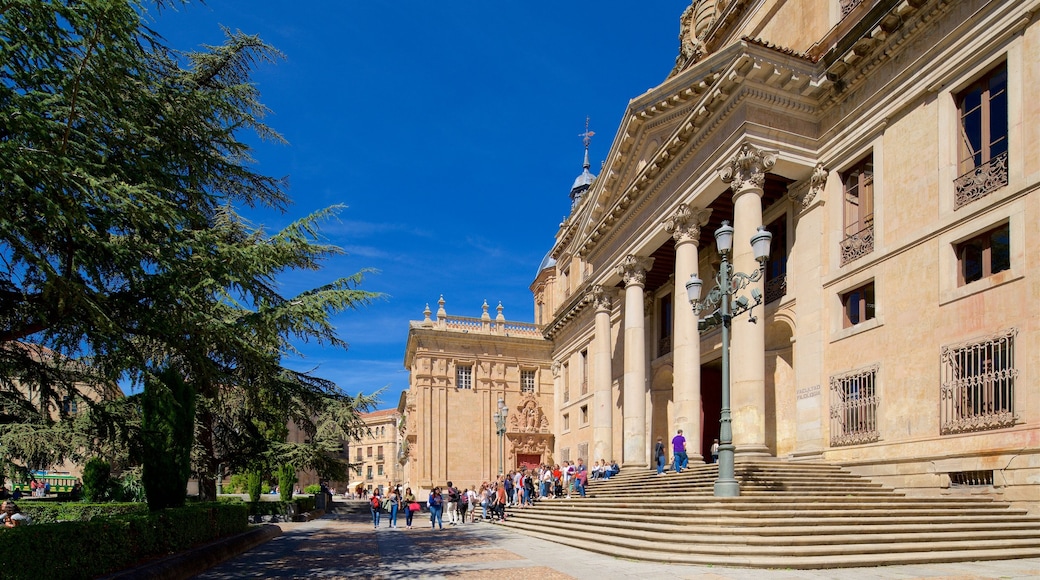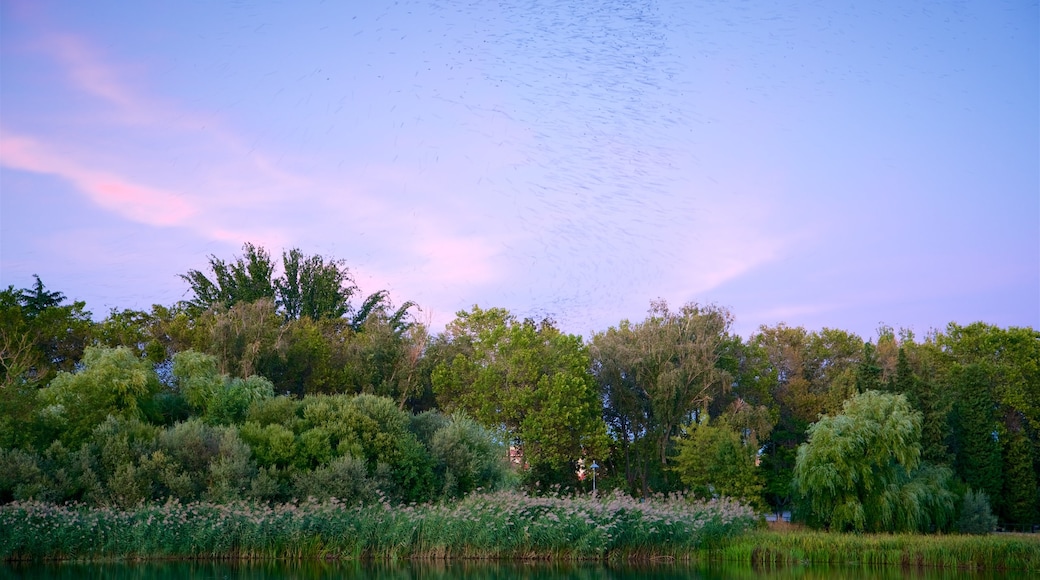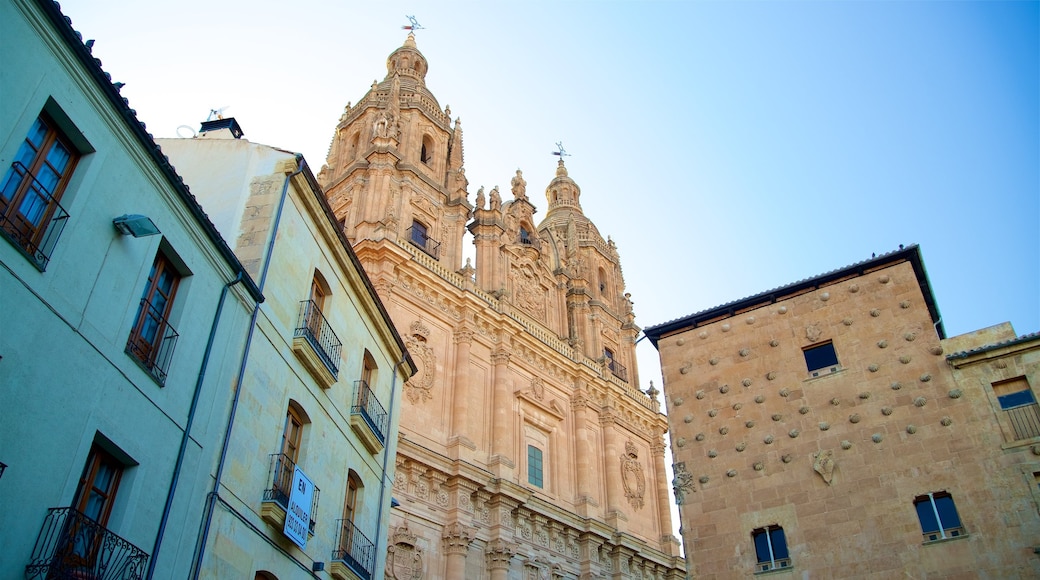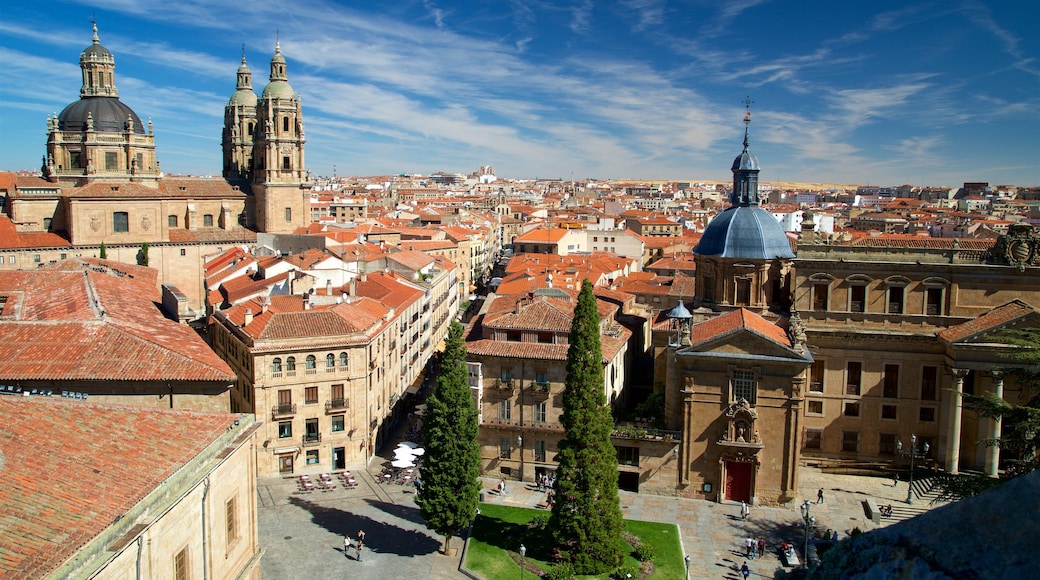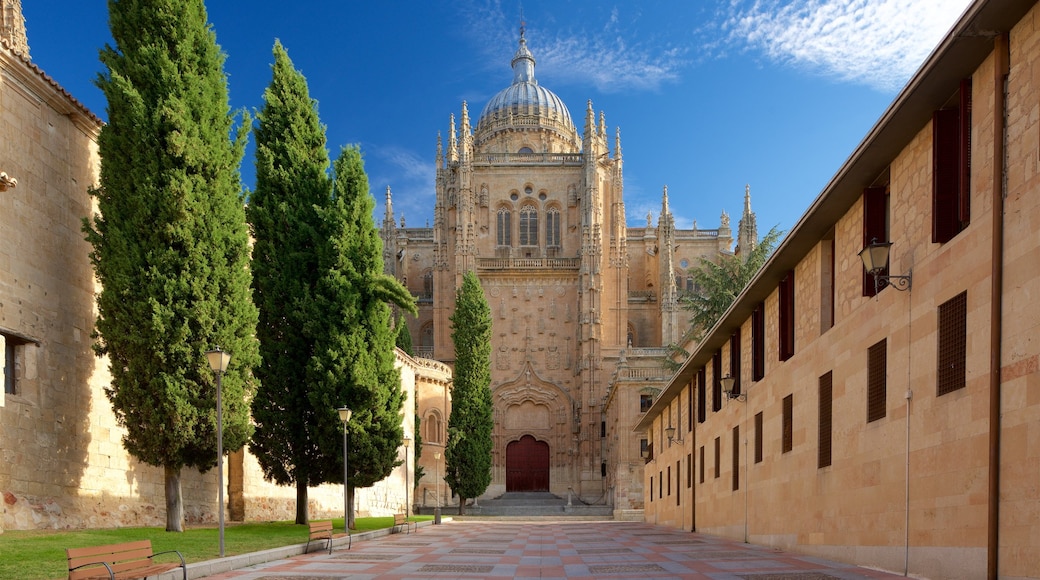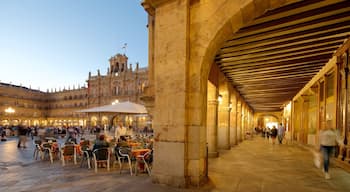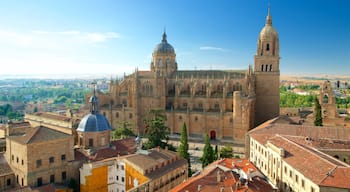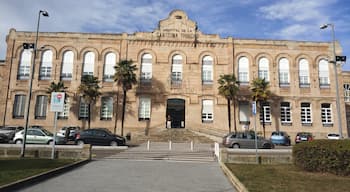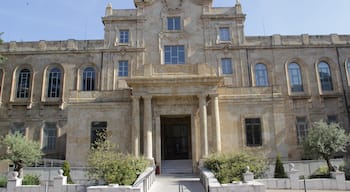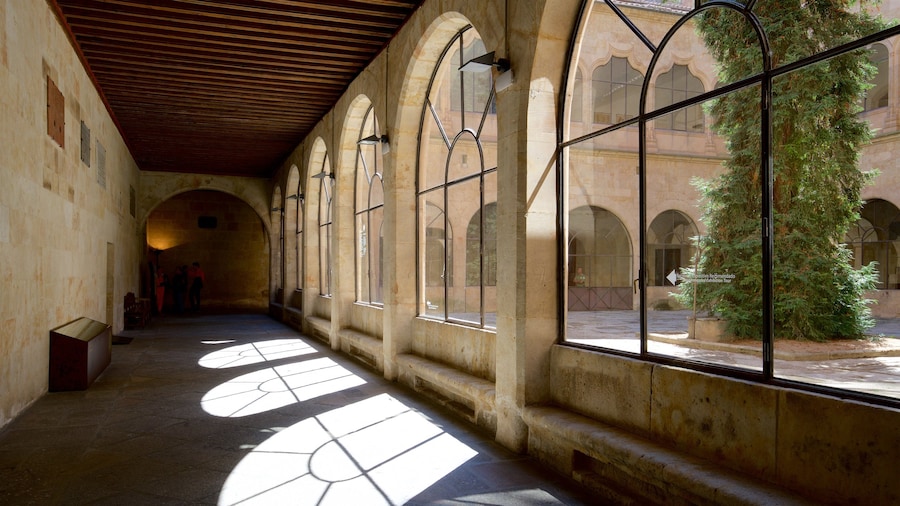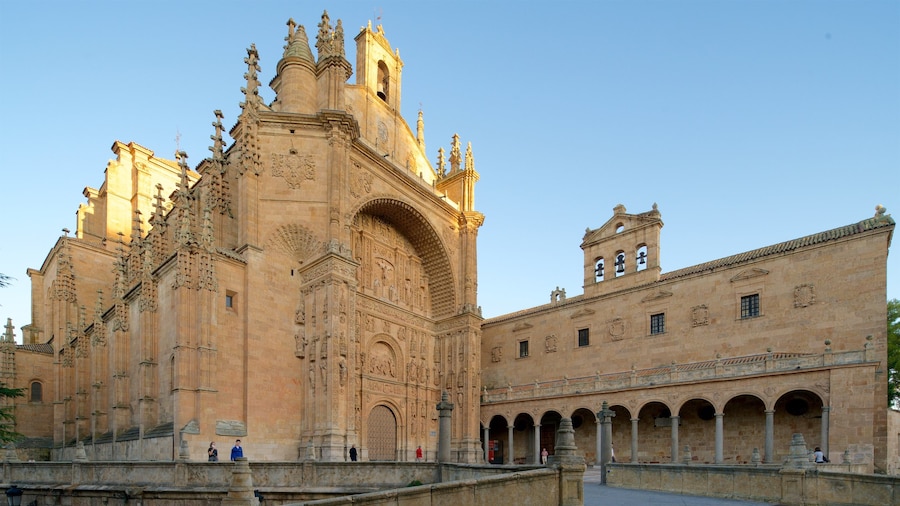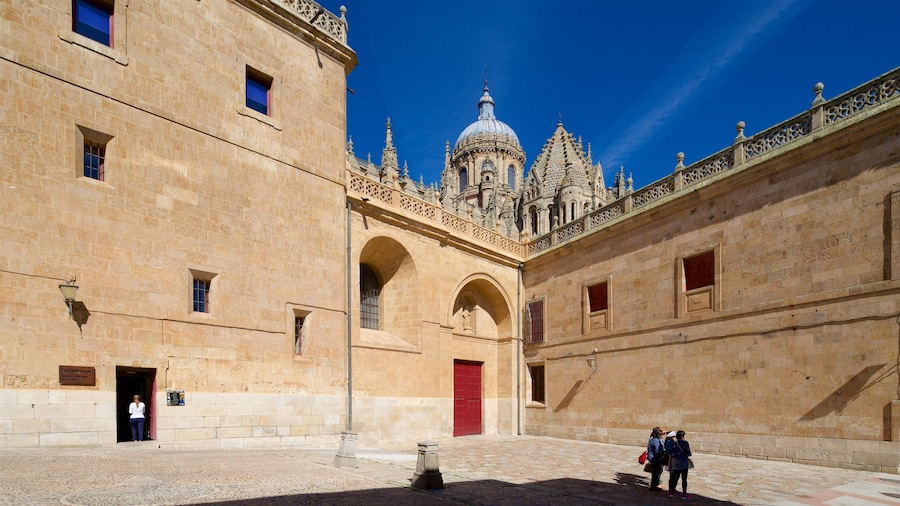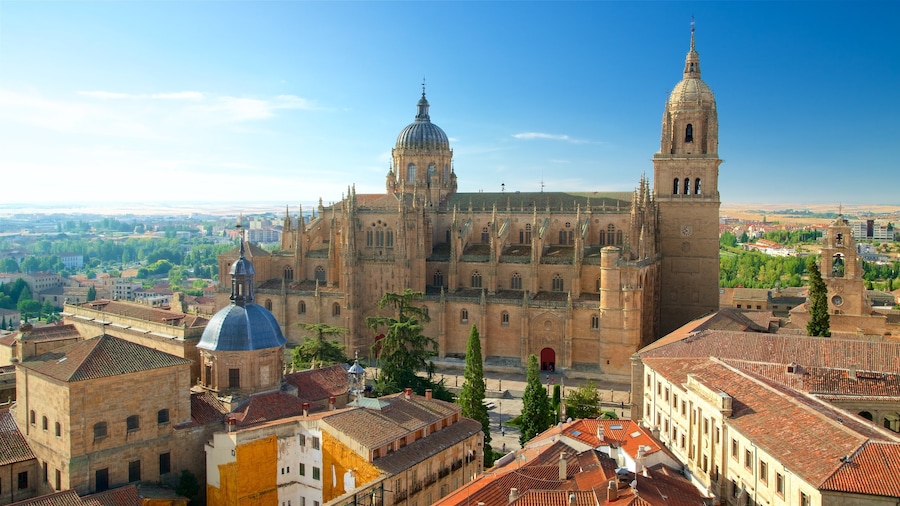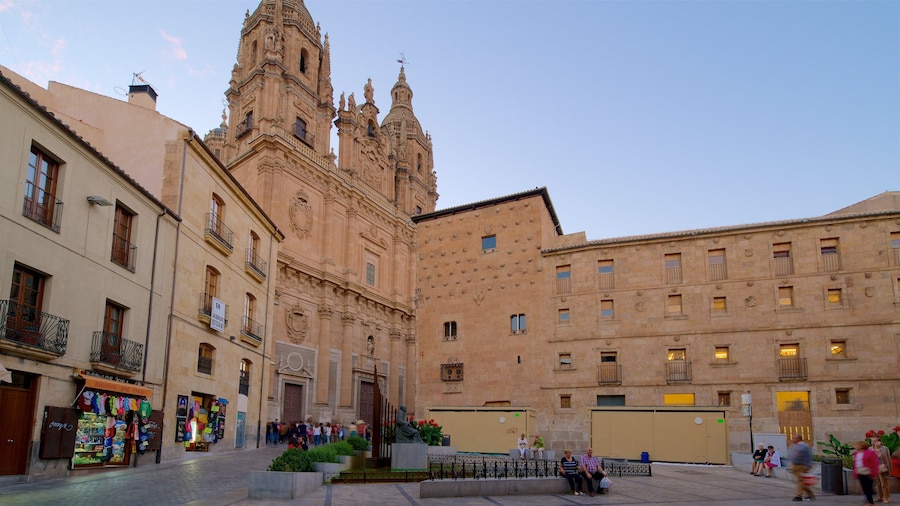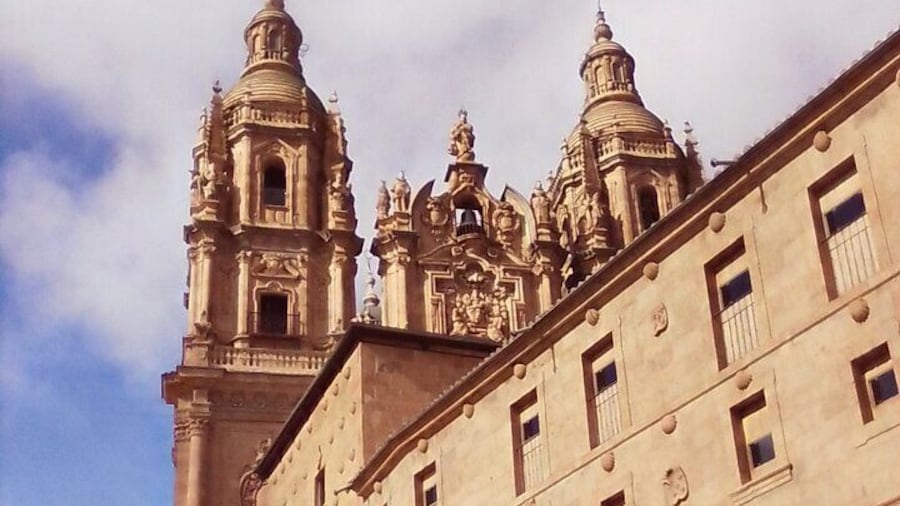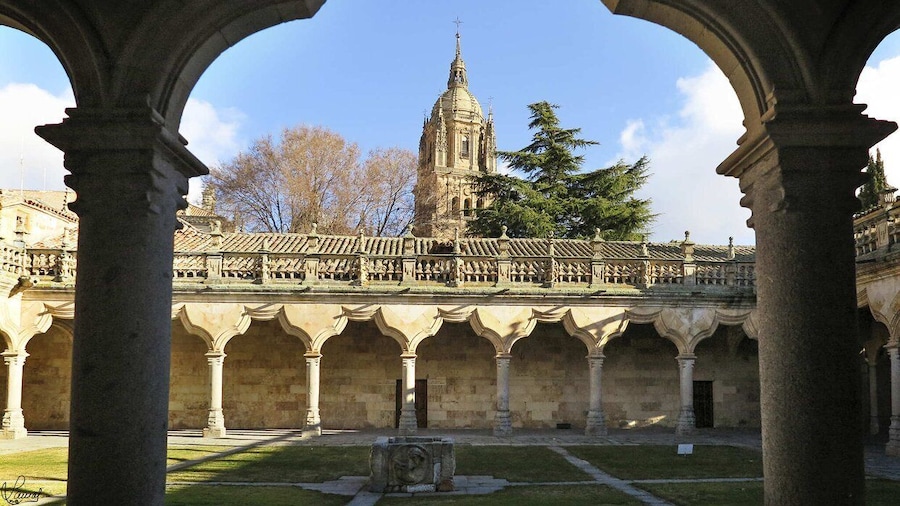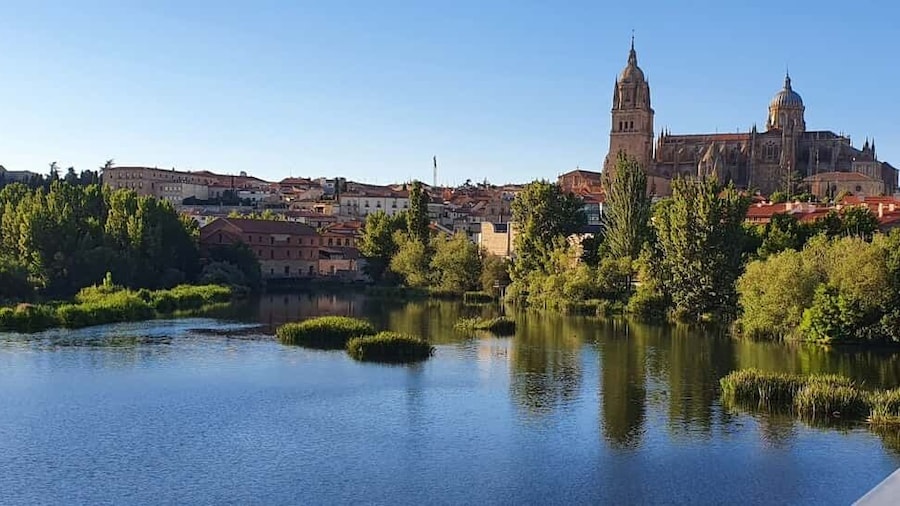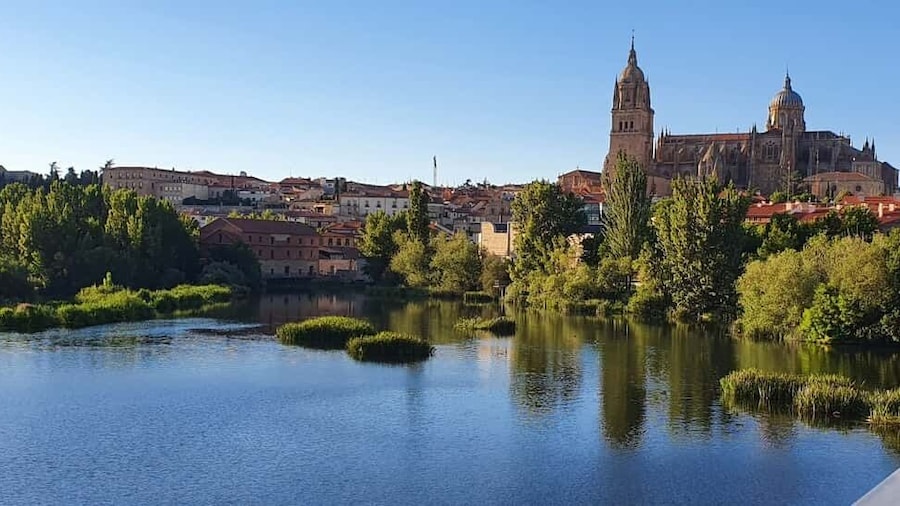Journey through hundreds of years of history when you tour the well-preserved buildings of this lovely city in northwestern Spain.
Salamanca is a UNESCO World Heritage Site. This medieval university city is filled with ancient monuments and buildings that stand testament to its long history. Its palaces, convents and cathedrals are awesome sights, whether blazing in the afternoon sun or illuminated at night. Meanwhile the large student population engenders a youthful vigour and vitality. Visit the oldest university in Spain, tour a 12th-century cathedral and view religious artworks that are hundreds of years old.
Salamanca is a pedestrian-friendly city. Cross the Roman BridgeOpens in a new window that spans the River Tormes to enter the historic centre. Walk down the Rúa Mayor toward the Plaza Mayor, the social and political heart of Salamanca. This vast public space is surrounded by colonnades and arches, their spandrels decorated with plaques illustrating famous people from Spanish history. Stop for refreshments in one of the cafés and then continue your sightseeing. Many of Salamanca’s well-known sights are within easy walking distance of the main square.
Go to Monterrey PalaceOpens in a new window, a 16th-century mansion. Study the ostentatious façades, excellent examples of Spanish Plateresque style. Stop at nearby Salamanca University, the oldest in Spain. Founded in the early 13th century, during the Middle Ages it was one of Europe's leading centres of learning. Look up at the flamboyant main façade, another Plateresque work.
Next to the university are Salamanca’s Old CathedralOpens in a new window and New CathedralOpens in a new window, both of which house centuries-old religious art. Browse even more art at San Esteban ConventOpens in a new window and at the Art Nouveau and Art Deco MuseumOpens in a new window.
During late afternoons, observe an effect that has earned Salamanca the nickname of Golden City. The sandstone cathedrals, convents and other buildings give off a golden glow in the sunlight.
To get to Salamanca, fly to MadridOpens in a new window, about 135 miles (220 kilometres) away. From there come by bus, train or car. As most of the compact historical centre is pedestrianized, the easiest way to get around to the many ancient treasures is on foot.
